Your Neutrophil life cycle images are available. Neutrophil life cycle are a topic that is being searched for and liked by netizens today. You can Download the Neutrophil life cycle files here. Find and Download all royalty-free vectors.
If you’re searching for neutrophil life cycle images information related to the neutrophil life cycle interest, you have come to the right site. Our website frequently gives you hints for seeking the maximum quality video and picture content, please kindly hunt and locate more enlightening video content and images that match your interests.
Neutrophil Life Cycle. How PMNs adapt to various microenvironments encountered during their life cycle from the bone marrow to the blood plasma fraction and to inflamed or infected tissues remai. However a recent study reported a neutrophil half-life of 54 days 11 fundamentally changing our view of neutrophil function in a living organism. Neutrophils are recognized as an essential part of the innate immune response but an active debate still exists regarding the life cycle of these cells. Left shift in the neutrophil populationfirst described by Arneth29.
 Neutrophil Homeostasis And Inflammation Novel Paradigms From Studying Periodontitis Hajishengallis 2015 Journal Of Leukocyte Biology Wiley Online Library From jlb.onlinelibrary.wiley.com
Neutrophil Homeostasis And Inflammation Novel Paradigms From Studying Periodontitis Hajishengallis 2015 Journal Of Leukocyte Biology Wiley Online Library From jlb.onlinelibrary.wiley.com
Subsequently the clearance of neutrophils is discussed in light of recent calculations of neutrophil populations and methods used focusing on how the calculations are performed and which assumptions are made. This concept is hypothetical but is supported by several lines of evidence including the presence of immature progenitors trafficking throughout multiple tissues in mice. They mature in the bone marrow and are then released into blood and tissues. Left shift in the neutrophil populationfirst described by Arneth29. Neutrophils first differentiate in the bone marrow through progenitor intermediaries before entering the blood in a process that gauges the extramedullary pool size. Different parts of the neutrophil life cycle are discussed as well as the kinetics.
Neutrophils represent about 70 of all leukocytes and more than 10 11 cells are produced every day in the bone marrow Dancey et al 1976From there neutrophils enter the blood where they circulate until they leave into tissues.
Neutrophils first differentiate in the bone-marrow. The authors arrived at a neutrophil lifetime of 54 days. A fascinating issue when considering the life cycle of neutrophils is the possibility that these cells undergo terminal differentiation outside the bone marrow. This concept provides a rationale as to why progenitors are. From their initial appearance in the liver thymus and spleen at around the eighth week of human gestation to their generation in large numbers in the bone marrow at the end of term gestation the differentiation of the pluripotent hematopoietic stem cell into a mature segmented neutrophil is a highly controlled process where the transcriptional regulators CEBP-α and CEBP-ε play a vital role. Neutrophils are recognized as an essential part of the innate immune response but an active debate still exists regarding the life cycle of these cells.
 Source: immunology.sciencemag.org
Source: immunology.sciencemag.org
Neutrophils are recognized as an essential part of the innate immune response but an active debate still exists regarding the life cycle of these cells. A fascinating issue when considering the life cycle of neutrophils is the possibility that these cells undergo terminal differentiation outside the bone marrow. G-CSF thus regulates the neutrophil life cycle at multiple levels and consequently has become an important therapeutic agent for neutropenic diseases as discussed below. Several functions of neutrophils and the consequences of these functions to their life span will be discussed. They mature in the bone marrow and are then released into blood and tissues.
 Source: jlb.onlinelibrary.wiley.com
Source: jlb.onlinelibrary.wiley.com
A fascinating issue when considering the life cycle of neutrophils is the possibility that these cells undergo terminal differentiation outside the bone marrow. Neutrophils first differentiate in the bone marrow through progenitor intermediaries before entering the blood in a process that gauges the extramedullary pool size. Polymorphonuclear neutrophils PMNs are innate immune cells which represent 50 to 70 of the total circulating leukocytes. Left shift in the neutrophil populationfirst described by Arneth29. However a recent study reported a neutrophil half-life of 54 days 11 fundamentally changing our view of neutrophil function in a living organism.
 Source: thermofisher.com
Source: thermofisher.com
This concept provides a rationale as to why progenitors are. A fascinating issue when considering the life cycle of neutrophils is the possibility that these cells undergo terminal differentiation outside the bone marrow. The Neutrophil Life Cycle Neutrophils are of granulocyte origin. The Neutrophil Life Cycle Neutrophils are of granulocyte origin. Subsequently the clearance of neutrophils is discussed in light of recent calculations of neutrophil populations and methods used focusing on how the calculations are performed and which assumptions are made.
Source:
A fascinating issue when considering the life cycle of neutrophils is the possibility that these cells undergo terminal differentiation outside the bone marrow. This concept provides a rationale as to why progenitors are. The postmitotic pool takes 56 days from the last division of the myelocyte to the transition of the banded cell into the mature neutrophil in humans Figure 1 13252728Thistimeissignificantly shorter 23 days in rodents 30. Neutrophil proliferation and maturation is stimulated by granulocyte colony stimulating factor G-CSF. Subsequently the clearance of neutrophils is discussed in light of recent calculations of neutrophil populations and methods used focusing on how the calculations are performed and which assumptions are made.
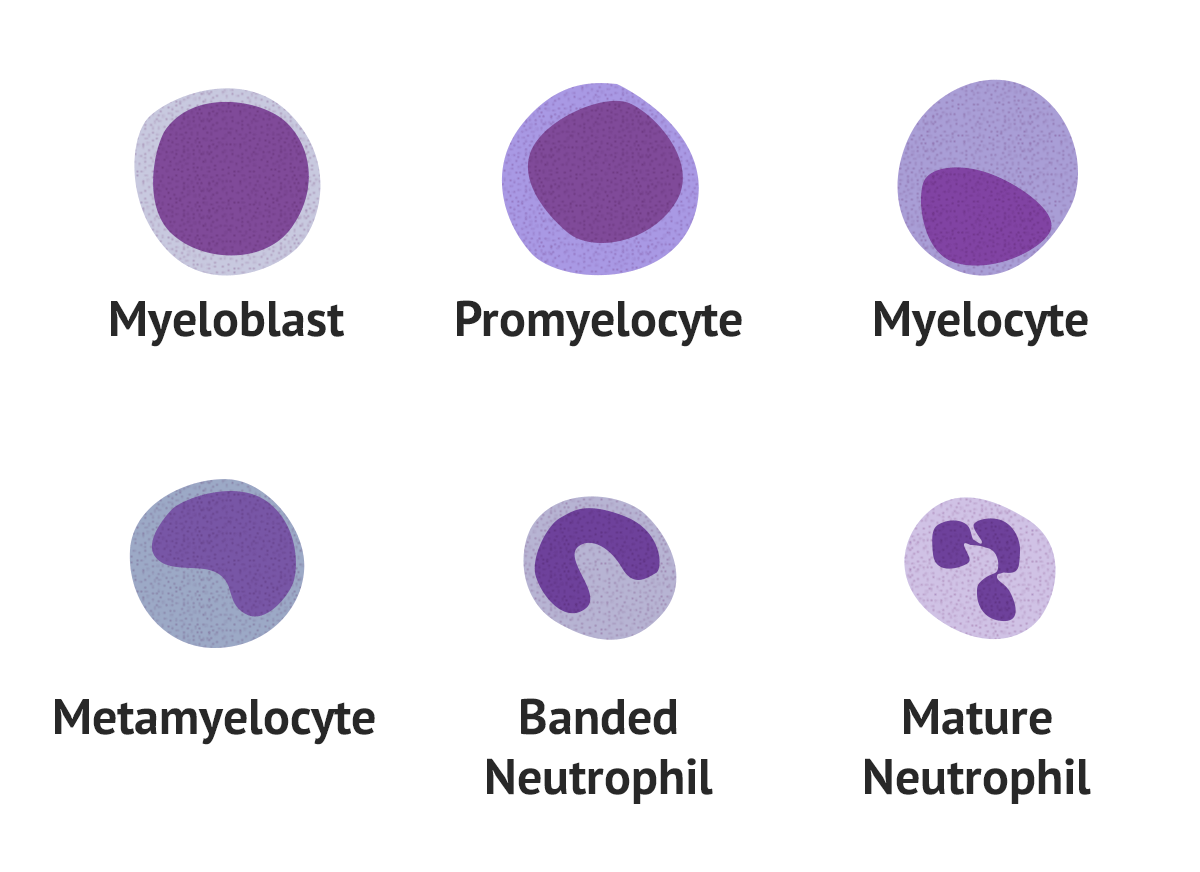 Source: medschool.co
Source: medschool.co
Neutrophils are recognized as an essential part of the innate immune response but an active debate still exists regarding the life cycle of these cells. Neutrophils first differentiate in the bone marrow through progenitor intermediaries before entering the blood in a process that. G-CSF thus regulates the neutrophil life cycle at multiple levels and consequently has become an important therapeutic agent for neutropenic diseases as discussed below. Hidalgo et al The neutrophil life cycle 2 Page Abstract Neutrophils are recognized as an essential part of the innate immune response but an active debate still exists regarding the life-cycle of these cells. Neutrophils represent about 70 of all leukocytes and more than 10 11 cells are produced every day in the bone marrow Dancey et al 1976From there neutrophils enter the blood where they circulate until they leave into tissues.
Source:
Different parts of the neutrophil life cycle are discussed as well as the kinetics. A fascinating issue when considering the life cycle of neutrophils is the possibility that these cells undergo terminal differentiation outside the bone marrow. From their initial appearance in the liver thymus and spleen at around the eighth week of human gestation to their generation in large numbers in the bone marrow at the end of term gestation the differentiation of the pluripotent hematopoietic stem cell into a mature segmented neutrophil is a highly controlled process where the transcriptional regulators CEBP-α and CEBP-ε play a vital role. Neutrophil proliferation and maturation is stimulated by granulocyte colony stimulating factor G-CSF. Neutrophil life cycle.
 Source: cell.com
Source: cell.com
A fascinating issue when considering the life cycle of neutrophils is the possibility that these cells undergo terminal differentiation outside the bone marrow. A fascinating issue when considering the life cycle of neutrophils is the possibility that these cells undergo terminal differentiation outside the bone marrow. They mature in the bone marrow and are then released into blood and tissues. Neutrophils are recognized as an essential part of the innate immune response but an active debate still exists regarding the life cycle of these cells. Hidalgo et al The neutrophil life cycle 2 Page Abstract Neutrophils are recognized as an essential part of the innate immune response but an active debate still exists regarding the life-cycle of these cells.
 Source: jlb.onlinelibrary.wiley.com
Source: jlb.onlinelibrary.wiley.com
They mature in the bone marrow and are then released into blood and tissues. The Neutrophil Life Cycle Neutrophils are of granulocyte origin. This concept is hypothetical but is supported by several lines of evidence including the presence of immature progenitors trafficking throughout multiple tissues in mice. Different parts of the neutrophil life cycle are discussed as well as the kinetics. Subsequently the clearance of neutrophils is discussed in light of recent calculations of neutrophil populations and methods used focusing on how the calculations are performed and which assumptions are made.
 Source: link.springer.com
Source: link.springer.com
This concept provides a rationale as to why progenitors are. Neutrophils first differentiate in the bone marrow through progenitor intermediaries before entering the blood in a process that gauges the extramedullary pool size. They mature in the bone marrow and are then released into blood and tissues. Neutrophils are recognized as an essential part of the innate immune response but an active debate still exists regarding the life cycle of these cells. The postmitotic pool takes 56 days from the last division of the myelocyte to the transition of the banded cell into the mature neutrophil in humans Figure 1 13252728Thistimeissignificantly shorter 23 days in rodents 30.
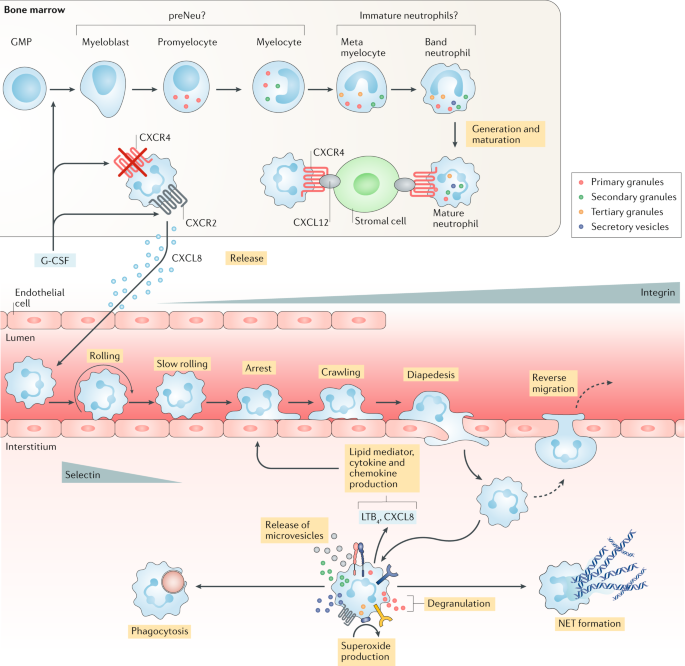 Source: nature.com
Source: nature.com
Different parts of the neutrophil life cycle are discussed as well as the kinetics. Subsequently the clearance of neutrophils is discussed in light of recent calculations of neutrophil populations and methods used focusing on how the calculations are performed and which assumptions are made. This concept is hypothetical but is supported by several lines of evidence including the presence of immature progenitors trafficking throughout multiple tissues in mice. Neutrophils first differentiate in the bone marrow through progenitor intermediaries before entering the blood in a process that. Neutrophils first differentiate in the bone marrow through progenitor intermediaries before entering the blood in a process that gauges the extramedullary pool size.
 Source: researchgate.net
Source: researchgate.net
How PMNs adapt to various microenvironments encountered during their life cycle from the bone marrow to the blood plasma fraction and to inflamed or infected tissues remai. They mature in the bone marrow and are then released into blood and tissues. Neutrophils are recognized as an essential part of the innate immune response but an active debate still exists regarding the life cycle of these cells. Neutrophils first differentiate in the bone-marrow. Neutrophils are recognized as an essential part of the innate immune response but an active debate still exists regarding the life cycle of these cells.
 Source: cell.com
Source: cell.com
Neutrophil development and life cycle Neutrophils in the periphery are comparatively short-lived compared to other immune cells 624 h in circulation and possibly up to 7 days in tissue during an inflammatory response. Neutrophils first differentiate in the bone-marrow. However a recent study reported a neutrophil half-life of 54 days 11 fundamentally changing our view of neutrophil function in a living organism. Neutrophil development and life cycle Neutrophils in the periphery are comparatively short-lived compared to other immune cells 624 h in circulation and possibly up to 7 days in tissue during an inflammatory response. Neutrophil proliferation and maturation is stimulated by granulocyte colony stimulating factor G-CSF.
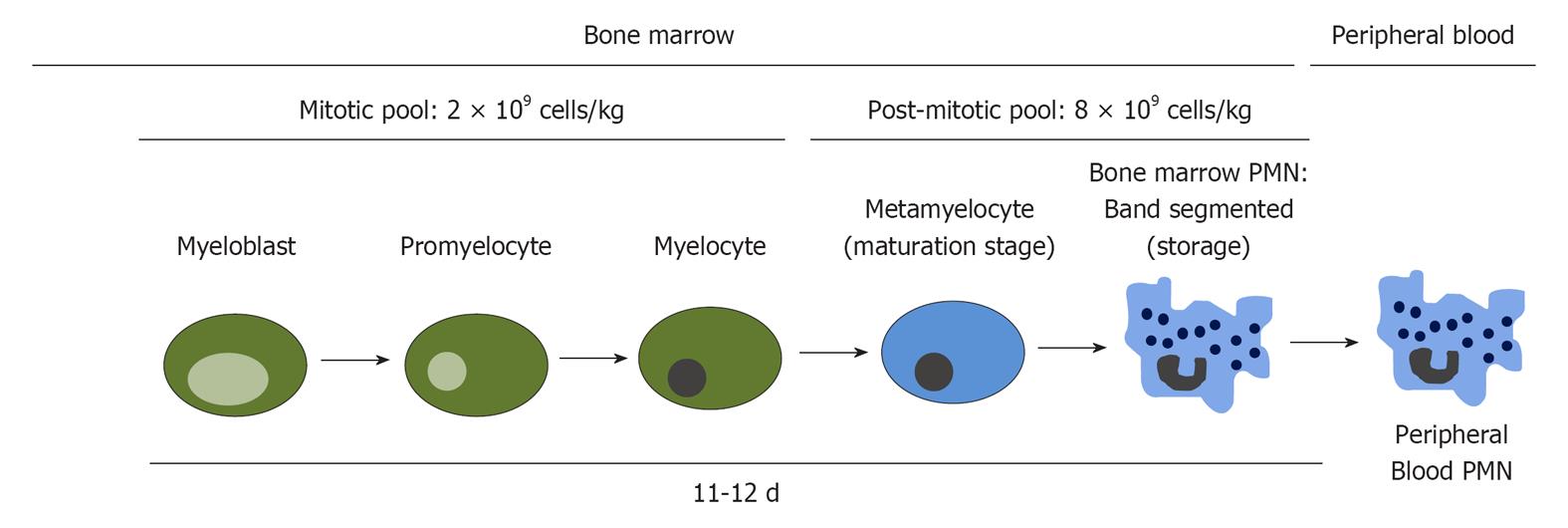 Source: wjgnet.com
Source: wjgnet.com
Neutrophils first differentiate in the bone marrow through progenitor intermediaries before entering the blood in a process that gauges the extramedullary pool size. The Neutrophil Life Cycle Neutrophils are of granulocyte origin. Several functions of neutrophils and the consequences of these functions to their life span will be discussed. Subsequently the clearance of neutrophils is discussed in light of recent calculations of neutrophil populations and methods used focusing on how the calculations are performed and which assumptions are made. Neutrophil life cycle.
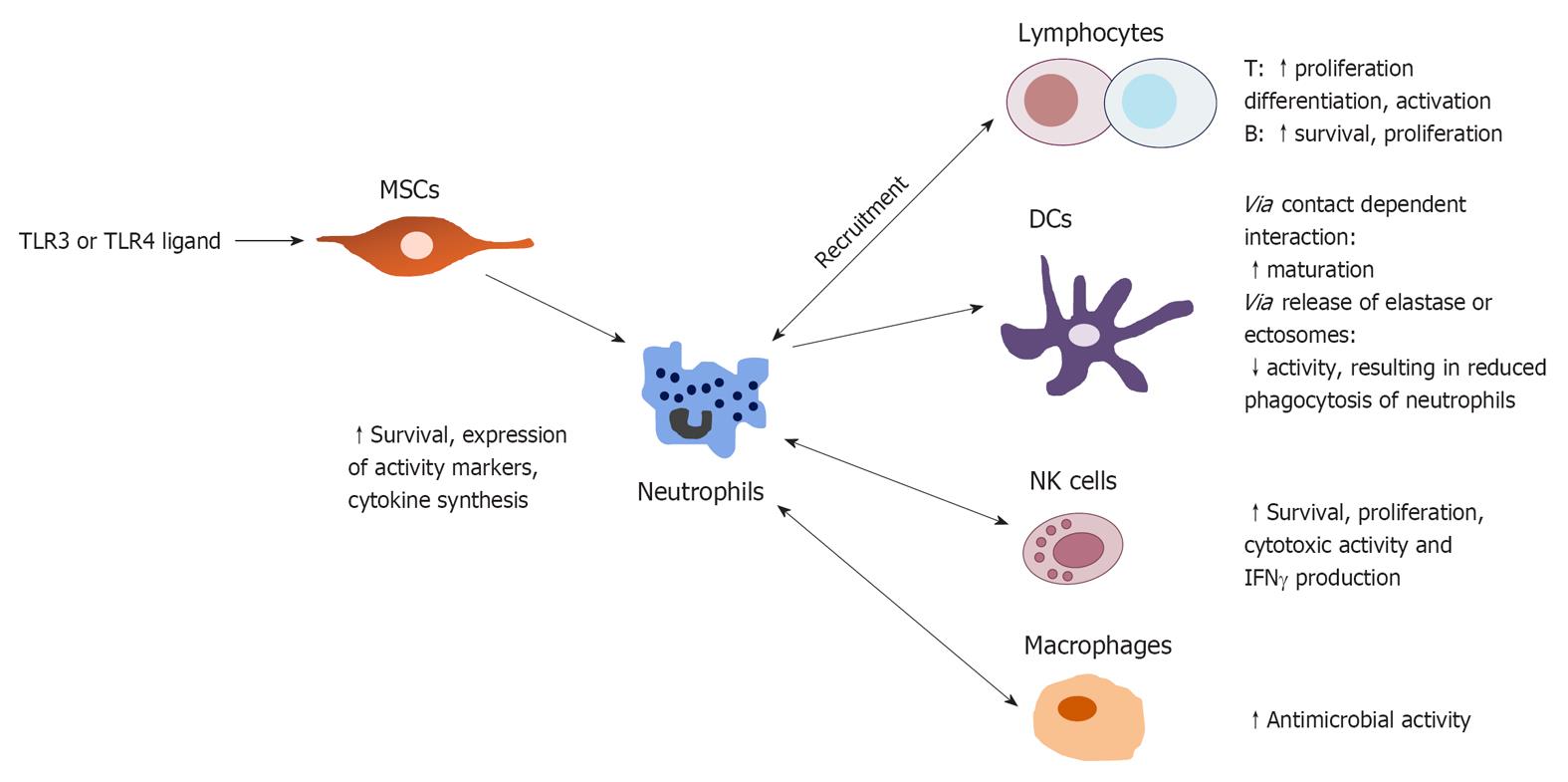 Source: wjgnet.com
Source: wjgnet.com
Neutrophil life cycle. The postmitotic pool takes 56 days from the last division of the myelocyte to the transition of the banded cell into the mature neutrophil in humans Figure 1 13252728Thistimeissignificantly shorter 23 days in rodents 30. The Neutrophil Life Cycle Neutrophils are of granulocyte origin. They mature in the bone marrow and are then released into blood and tissues. Neutrophil proliferation and maturation is stimulated by granulocyte colony stimulating factor G-CSF.
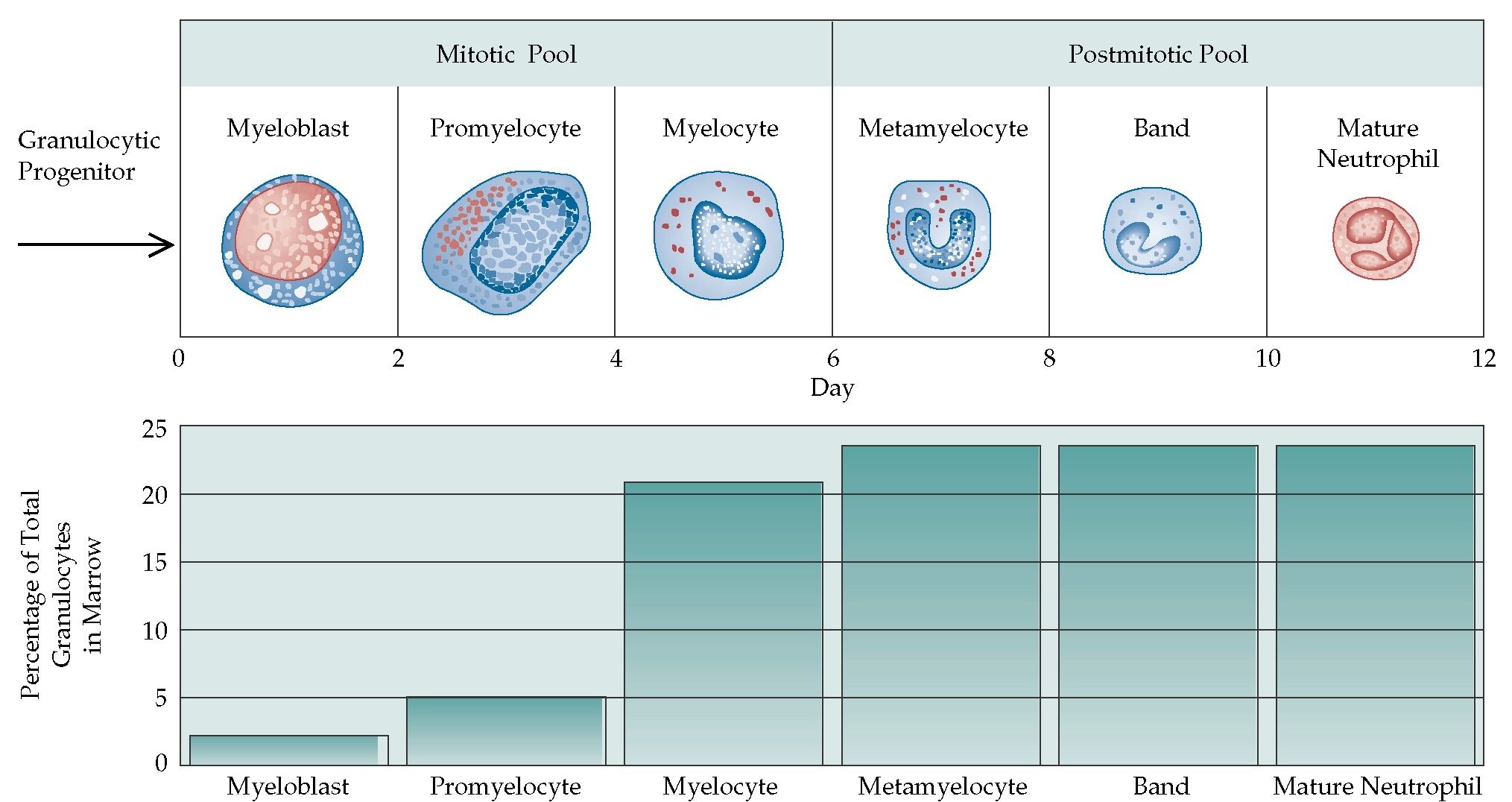 Source: what-when-how.com
Source: what-when-how.com
Recently autophagy has been reported as a negative regulator of neutrophil development in the bone marrow. Neutrophils first differentiate in the bone-marrow. Recently autophagy has been reported as a negative regulator of neutrophil development in the bone marrow. Neutrophils are recognized as an essential part of the innate immune response but an active debate still exists regarding the life cycle of these cells. Hidalgo et al The neutrophil life cycle 2 Page Abstract Neutrophils are recognized as an essential part of the innate immune response but an active debate still exists regarding the life-cycle of these cells.
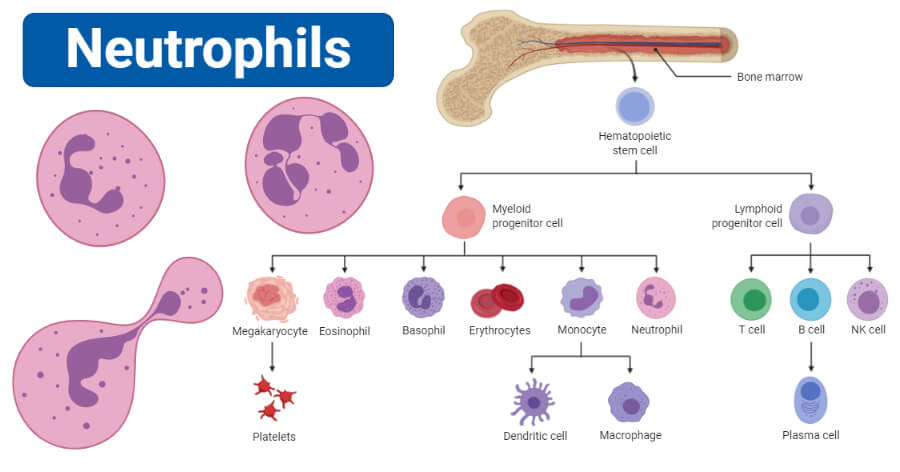 Source: microbenotes.com
Source: microbenotes.com
A fascinating issue when considering the life cycle of neutrophils is the possibility that these cells undergo terminal differentiation outside the bone marrow. Neutrophils are recognized as an essential part of the innate immune response but an active debate still exists regarding the life cycle of these cells. A fascinating issue when considering the life cycle of neutrophils is the possibility that these cells undergo terminal differentiation outside the bone marrow. Estimation of neutrophil half-life is based on the assumption that the rate at which neutrophils enter the blood from bone marrow equals the rate at which they are lost from the circulation which is reasonable given that the subjects studied also showed no sign of immunologic challenge. Neutrophils are recognized as an essential part of the innate immune response but an active debate still exists regarding the life cycle of these cells.
 Source: jlb.onlinelibrary.wiley.com
Source: jlb.onlinelibrary.wiley.com
Neutrophil proliferation and maturation is stimulated by granulocyte colony stimulating factor G-CSF. They mature in the bone marrow and are then released into blood and tissues. Neutrophil development and life cycle Neutrophils in the periphery are comparatively short-lived compared to other immune cells 624 h in circulation and possibly up to 7 days in tissue during an inflammatory response. The authors arrived at a neutrophil lifetime of 54 days. G-CSF thus regulates the neutrophil life cycle at multiple levels and consequently has become an important therapeutic agent for neutropenic diseases as discussed below.
 Source: thermofisher.com
Source: thermofisher.com
Neutrophils first differentiate in the bone marrow through progenitor intermediaries before entering the blood in a process that. Neutrophils first differentiate in the bone-marrow. Subsequently the clearance of neutrophils is discussed in light of recent calculations of neutrophil populations and methods used focusing on how the calculations are performed and which assumptions are made. Neutrophils are recognized as an essential part of the innate immune response but an active debate still exists regarding the life cycle of these cells. G-CSF thus regulates the neutrophil life cycle at multiple levels and consequently has become an important therapeutic agent for neutropenic diseases as discussed below.
This site is an open community for users to do sharing their favorite wallpapers on the internet, all images or pictures in this website are for personal wallpaper use only, it is stricly prohibited to use this wallpaper for commercial purposes, if you are the author and find this image is shared without your permission, please kindly raise a DMCA report to Us.
If you find this site value, please support us by sharing this posts to your preference social media accounts like Facebook, Instagram and so on or you can also save this blog page with the title neutrophil life cycle by using Ctrl + D for devices a laptop with a Windows operating system or Command + D for laptops with an Apple operating system. If you use a smartphone, you can also use the drawer menu of the browser you are using. Whether it’s a Windows, Mac, iOS or Android operating system, you will still be able to bookmark this website.






